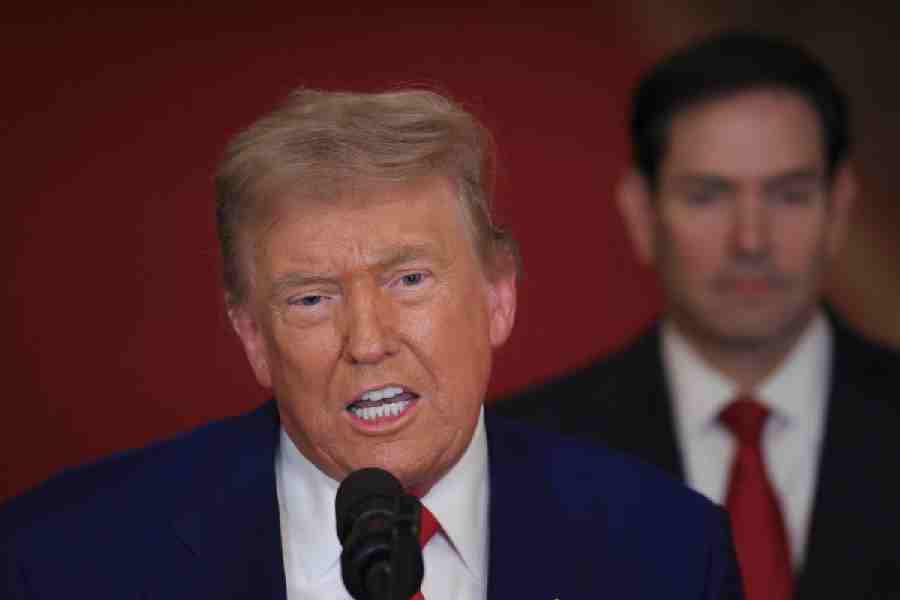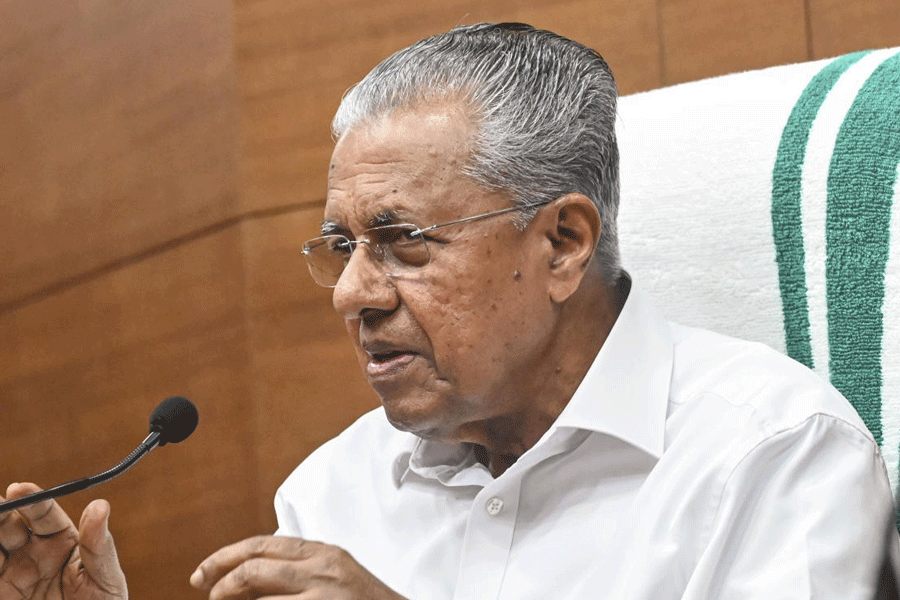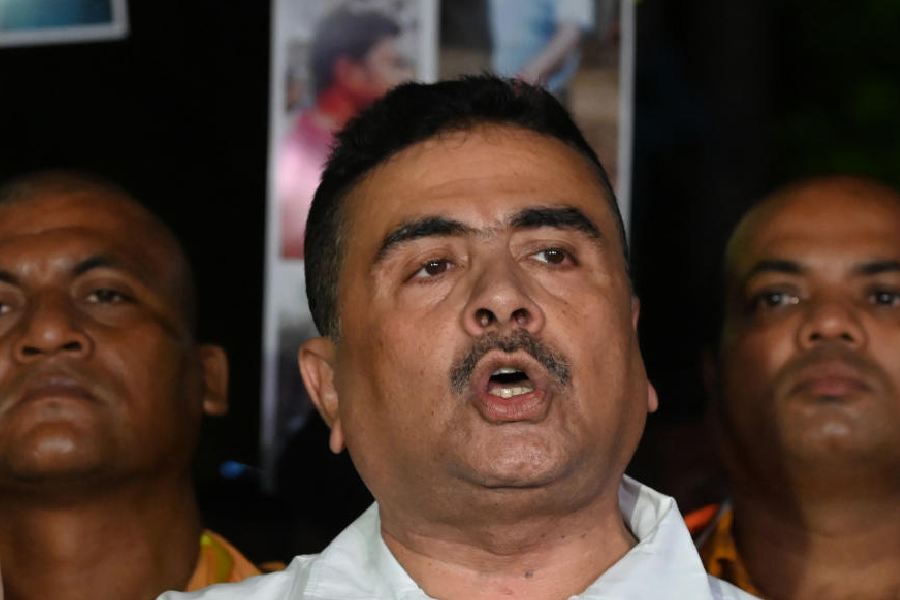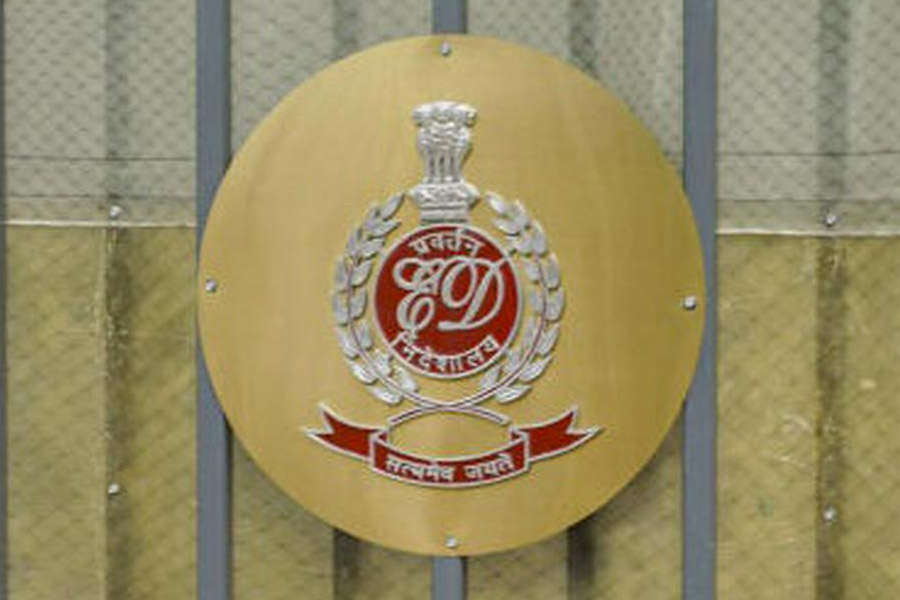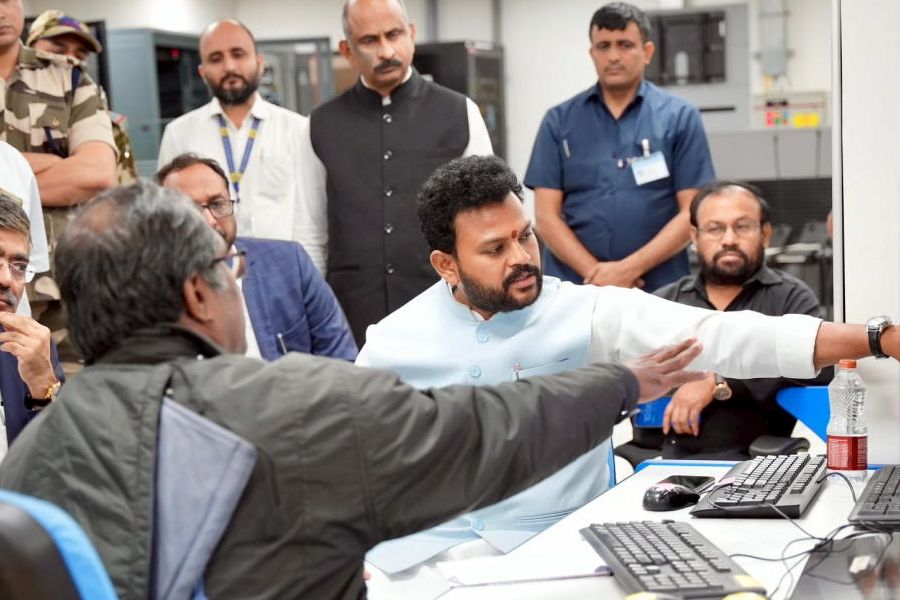Standing at the lectern in the White House briefing room on Thursday afternoon, Karoline Leavitt, the White House press secretary, read a message she said came “directly from the President”.
Because of the “substantial chance of negotiations” with Iran that could bring the US back from the brink of jumping into the war in West Asia, President Donald Trump’s statement said, he would make a decision about whether or not to strike Iran “within the next two weeks”.
Trump had been under pressure from the noninterventionist wing of his party to stay out of the conflict, and was having lunch that day with one of the most outspoken opponents of a bombing campaign, Stephen K. Bannon, fuelling speculation that he might hold off.
It was almost entirely a deception. Trump had all but made up his mind to bomb Iran’s nuclear facilities, and the military preparations were well underway for the complex attack. Less than 30 hours after Leavitt relayed his statement, he would give the order for an assault that put the US in the middle of the latest conflict to break out in one of the world’s most volatile regions.
Trump’s “two weeks” statement was just one aspect of a broader effort at political and military misdirection that took place over eight chaotic days, from the first Israeli strikes against Iran to the moment when a fleet of B-2 stealth bombers took off from Missouri for the first American military strikes inside Iran since that country’s theocratic revolution in 1979.
Interviews with administration officials, Trump allies and advisers, Pentagon officials and others familiar with the events show how, during this period, different factions of Trump’s allies jockeyed to win over a President who was listing in all directions over whether to choose war, diplomacy or some combination.
Outsiders tried to divine which faction was ascendant based on whom Trump met with at any given time. Trump seemed almost gleeful in telling reporters that he could make a decision “one second before it’s due, because things change, especially with war”.
All the while, Trump was making blustery statements indicating he was about to take the country into the conflict. These public pronouncements generated angst at the Pentagon and US Central Command, where military planners began to worry that Trump was giving Iran too much warning about an impending strike.
They built their own deception into the attack plan: a second group of B-2 bombers that would leave Missouri and head west over the Pacific Ocean in a way that flight trackers would be able to monitor on Saturday. That left a misimpression, for many observers and presumably Iran, about the timing and path of the attack, which would come from another directionentirely.
The strike plan was largely in place when Trump issued his Thursday statement about how he might take up to two weeks to decide to go to war with Iran. Refuelling tankers and fighter jets had been moved into position.
While the “two weeks” statement bought the President more time for last-minute diplomacy, military officials said that ruse and the head fake with the B-2s also had the effect of cleaning up a mess — the telegraphing of the attack — that was partly of the President’s making.
Tune switch
Trump had spent the early months of his administration warning Prime Minister Benjamin Netanyahu of Israel against a strike on Iran. But by the morning of Friday, June 13, hours after the first Israeli attacks, Trump had changed his tune.
He marvelled to advisers about what he said was a brilliant Israeli military operation. Trump took calls on his cellphone from reporters and began hailing the operation as “excellent” and “very successful” and hinting that he had much more to do with it than people realised.
Later that day, Trump asked an ally how the Israeli strikes were “playing”. He said “everyone” was telling him he needed to get more involved, including potentially dropping 13,600kg GBU-57 bombs on Fordo, the Iranian uranium-enrichment facility buried underneath a mountain south of Tehran.
The next day, the President told another adviser he was leaning towards using those “bunker buster” bombs on Fordo. The adviser left the conversation convinced that Trump had already decided to bomb Iran’s nuclear sites.
At the same time, the President’s team was closely monitoring how their most prominent supporters were reacting on social media and on television to the prospect of the US joining the war in a more visible way.
Political advisers to Trump had been swapping notes on various public and private polls examining the popularity of military action against Iran. While polls showed that an overwhelming majority of Americans did not want the US to go to war with Iran, most Americans also did not want Iran to obtain a nuclear weapon.
The President was closely monitoring Fox News, which was airing wall-to-wall praise of Israel’s military operation and featuring guests urging Trump to get more involved.
Deliberations among administration officials about a possible American strike on Iran were in full swing by Sunday night, June 15, when Trump left for Canada for the G7 meeting. Trump seemed to his advisers to be inching closer to approving a strike, even as he told them that Israel would be foolish to try to assassinate Ayatollah Ali Khamenei, Iran’ssupreme leader.
Moreover, he said, if the US were to strike Iran, the goal should be to decimate its nuclear facilities, not to bring down its government.
‘Threat to opsec’
By then, a small group of top military officials at the Pentagon and US Central Command in Tampa had already begun refining attack plans on the Fordo facility and other Iranian nuclear sites that military planners had drawn upyears ago.
B-2 stealth bombers, based at Whiteman Air Base in Missouri, are the only warplanes capable of delivering the GBU-57 bombs without detection by Iranian radar.
But even as the military planning was being conducted in secrecy, each of Trump’s social media posts seemed to be telling the world what was coming.
The President, said one military official, was the “biggest threat to opsec”, or operational security, that the planning faced.
To build confusion into the attack plan, military officials decided to have two groups of B-2 bombers leaveMissouri around the same time. One group would fly westbound, toward Guam, with transponders on that could be tracked by commercial satellite companies. Another group of seven bombers, carrying a full payload of bombs and with their transponders off, flew east toward Iran, undetected.
Shaping conversation
By Tuesday, June 17, Trump had largely made up his mind to strike Iran. But he took his coercive diplomacy to a new level, issuing menacing threats over social media.
“We now have complete and total control of the skies over Iran,” he posted on Truth Social.
By this point, several people in the anti-interventionist camp of Trump’s advisers realised they most likely could not prevent the President from hitting the Iranian nuclear facilities. So, they turned their focus on trying to ensure the American war did not spiral into an expansive “regime change” war.
That day, June 17, Vice-President J.D. Vance posted a long series of posts on social media that many within the anti-interventionist camp interpreted as him seeding the ground for a potential US military operation.
Prominent activists began working to shape the conversation for what was likely to come after the bombing: a debate about whether or not to engage in a war intended to bring about new leadership in Iran.
On Thursday, Trump was joined for lunch at the White House by Steve Bannon, one of the most prominent critics of US involvement in Israel’s war with Iran. Some wishful thinkers interpreted the meeting as a sign that Trump was getting cold feet.
Up to that point, Trump had been willing to continue to listen to those sceptical about the Iran strike, and to hear arguments about its possibly dire consequences — including for oil prices, civil war in Iran and a possible refugee crisis, in addition to the prospect of retaliatory attacks that could bring the US into a sustained conflict.
On Friday, Trump left the White House in the afternoon for a fund-raising event at his club in Bedminster, New Jersey, his main summer retreat, further feeding the impression that no attack was imminent.
But within hours, around 5pm on Friday, Trump ordered the military to begin its Iran mission.
One-off, or not
A complex and highly synchronised military operation began. Hours after the American aircraft had departed Iranian airspace, Trump gave a triumphant speech at the White House saying that the mission had “completely and totally obliterated” Iran’s nuclear capabilities. He suggested that the war could end with this one-off mission if Iran would give up its nuclear programme and negotiate.
By Sunday afternoon, however, American officials had tempered the optimism of the night before, saying that Iran’s nuclear facilities might have been severely damaged, but not entirely destroyed.
Vance and secretary of state Marco Rubio stressed that a regime change in Tehran was not the goal.
But Trump had already moved on, hinting in a Truth Social post that his goals could be shifting.
“It’s not politically correct to use the term, ‘Regime Change’,” he wrote, “but if the current Iranian Regime is unable to MAKE IRAN GREAT AGAIN, why wouldn’t there be a Regime change???”
New York Times News Service

